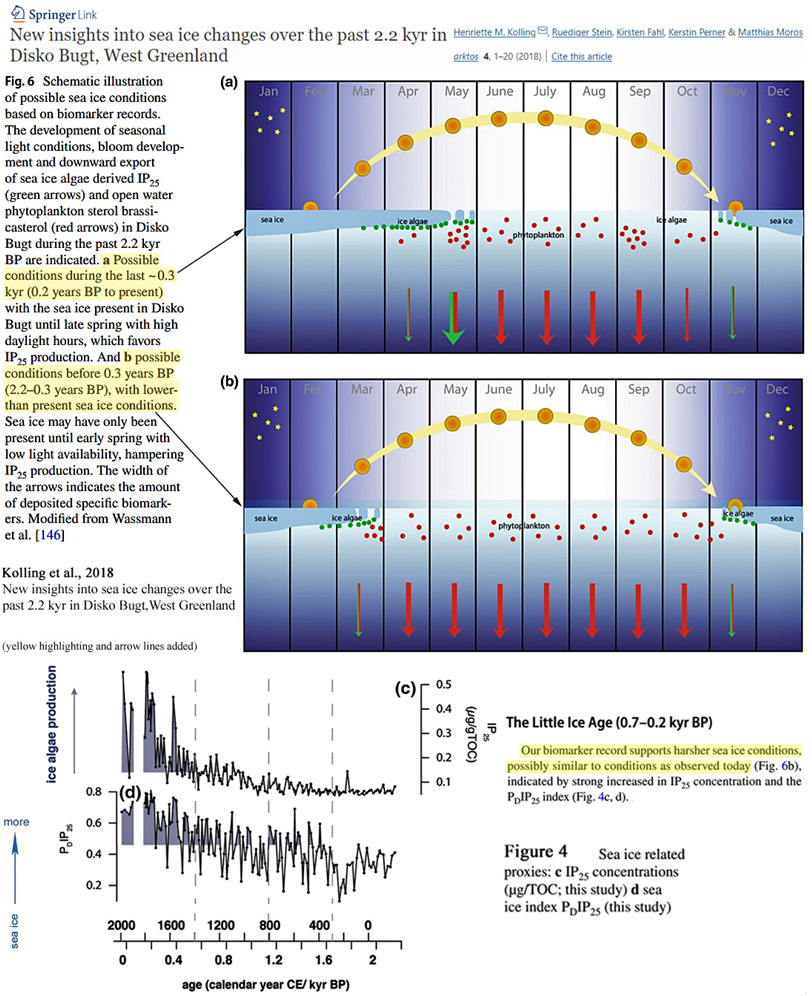Paleoclimate data indicate there was less Arctic sea ice during the pre-industrial period than in modern times, or when CO2 concentrations were 100 ppm lower than today (280 vs. 380 ppm).
Scientists (Diamond et al., 2021) assert that during the 18th and 19th centuries Arctic sea ice extent minimum (September) values averaged 5.54 million km².
Though modern sea ice losses are often characterized as dangerously low, satellite data indicate the 2002-’06 five-year average minimum sea ice extent was 5.92 million km², which is 0.38 km² above the 1700s and 1800s or pre-industrial (PI) levels. This would not appear to be consistent with claims of unprecedented sea ice losses in recent decades.
Also, CO2 peaked at only ~280 ppm during the Last Interglacial (LIG), which is approximately the same as the PI CO2 concentration. And yet due to the additional 60-75 W/m² shortwave Arctic forcing during that interglacial relative to today, there was “a consistently ice-free LIG Arctic from early August until early October” from about 130,000 to 115,000 years before present (Diamond et al., 2021).
(Polar bears – thought to be dependent on summer sea ice presence to hunt seal – nonetheless survived an ice-free Arctic for millennia.)
With both an ice-free Arctic summer and 5.5 million km² sea ice coverage minima at 280 ppm, as well as 5.9 million km² sea ice coverage minima values for 380 to 390 ppm (2002-’06), the CO2 concentration’s effect on Arctic sea ice extent seems to be entirely non-determinative.
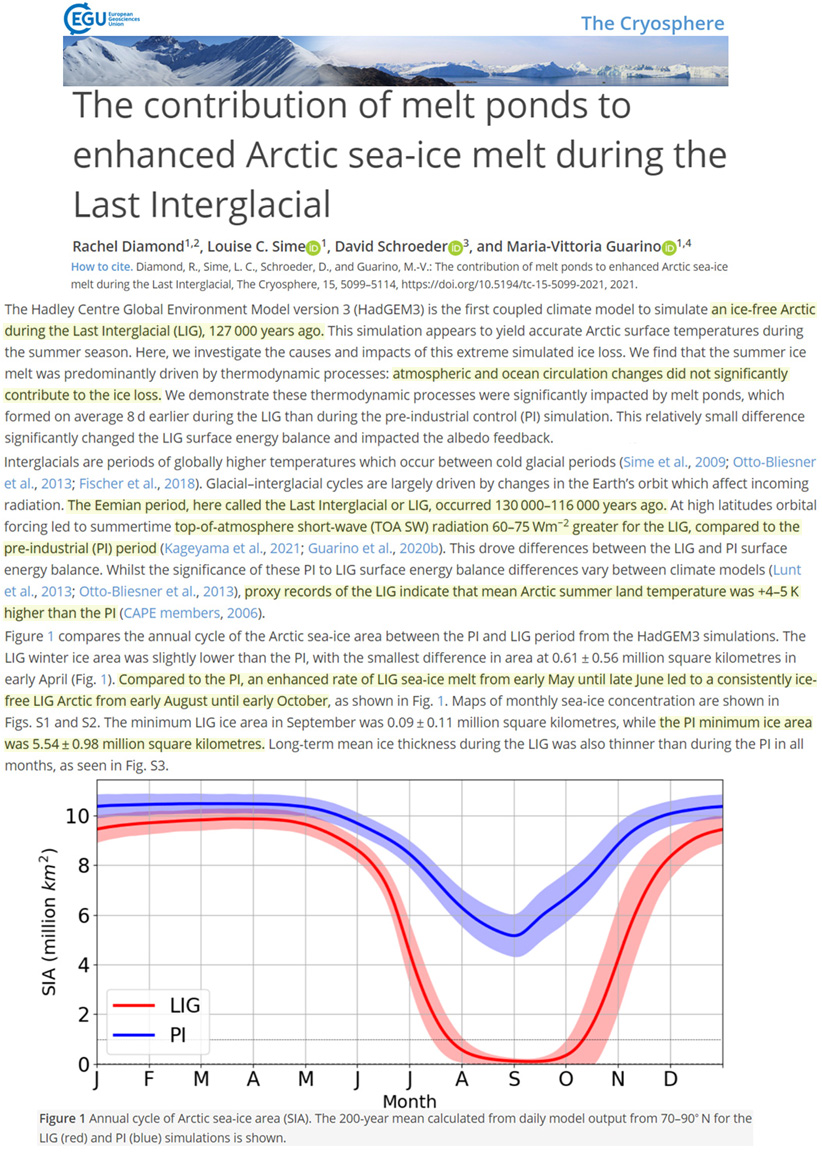
Image Source: Diamond et al., 2021
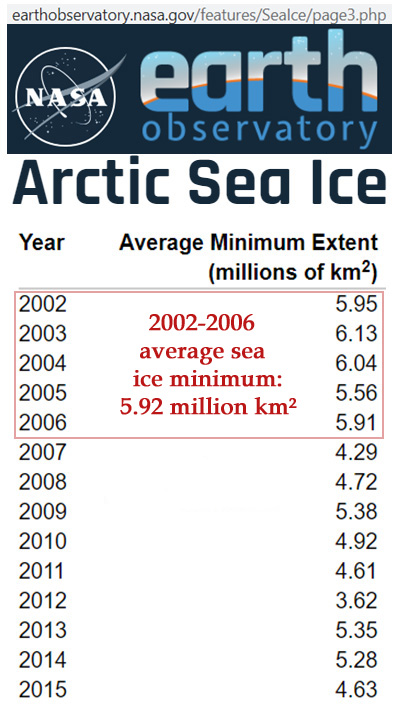
Image Source: NASA
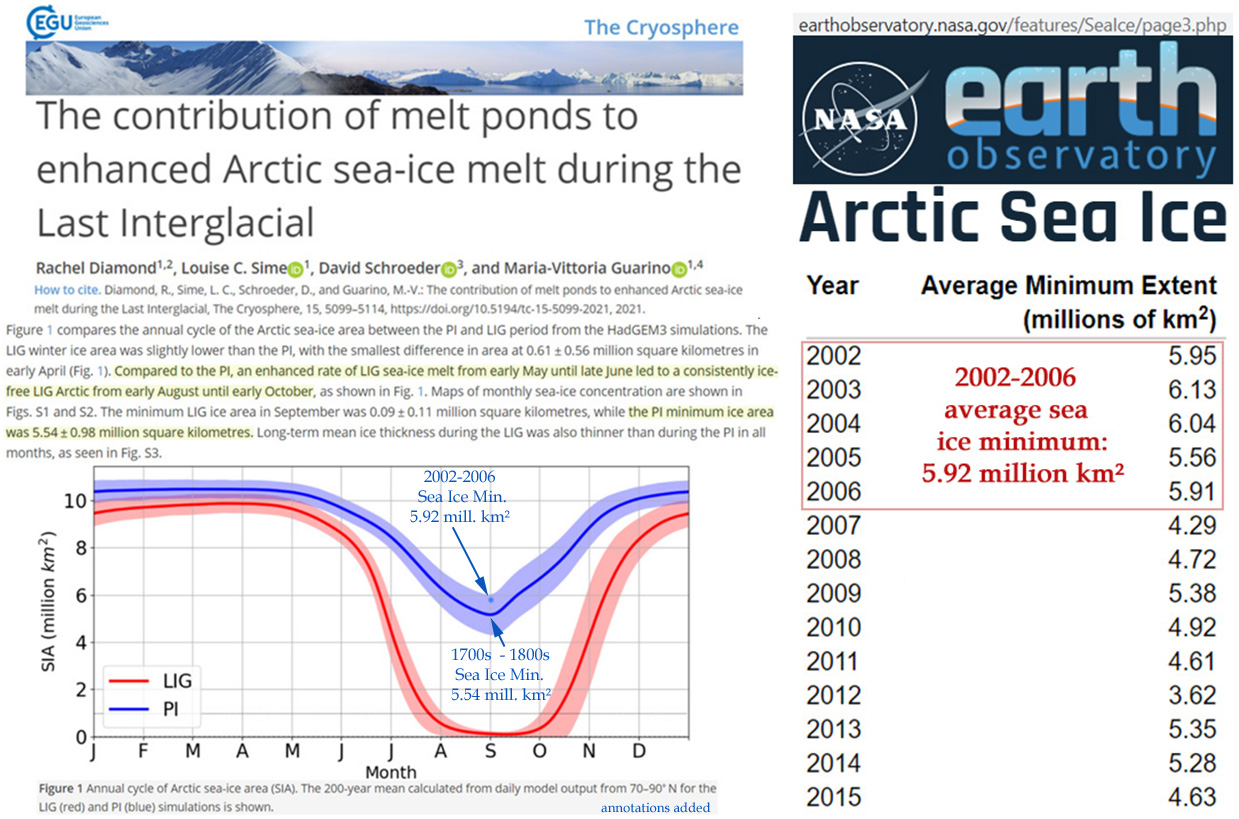
Image Source: Diamond et al., 2021 and NASA
Several other studies also affirm the sea ice losses observed via satellite in recent decades are not unusual or unprecedented when compared to past centuries.
For example, the sea ice duration in the Western Arctic lasted 7 to 9 months per year during the 1500s, 1600s, and 1700s, but from about 1820 to today, sea ice coverage has steadily lasted 11 to 11.5 months per year (Porter et al., 2019).
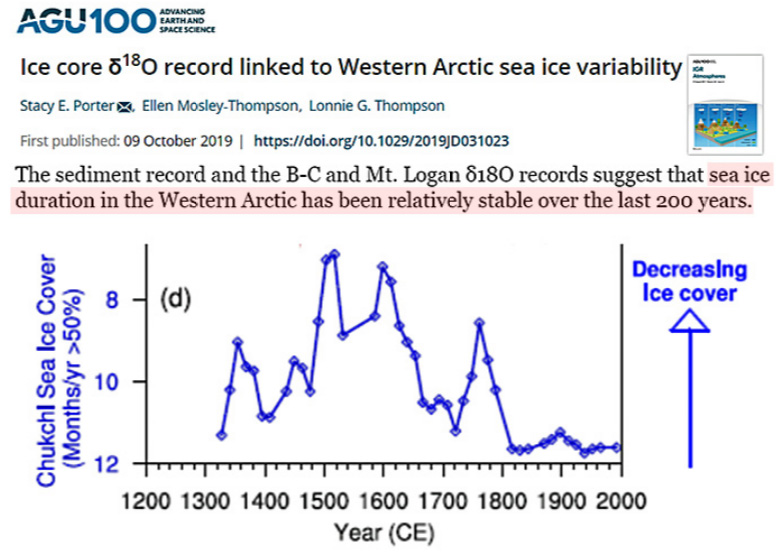
Image Source: Porter et al., 2019
Beaufort Sea temperatures were “up to 3°C” warmer than the 2000s between about 1885 and 1935 (Durantou et al., 2012), and thus the duration of the sea ice coverage averaged 1.1 months per year less than observed in recent decades.
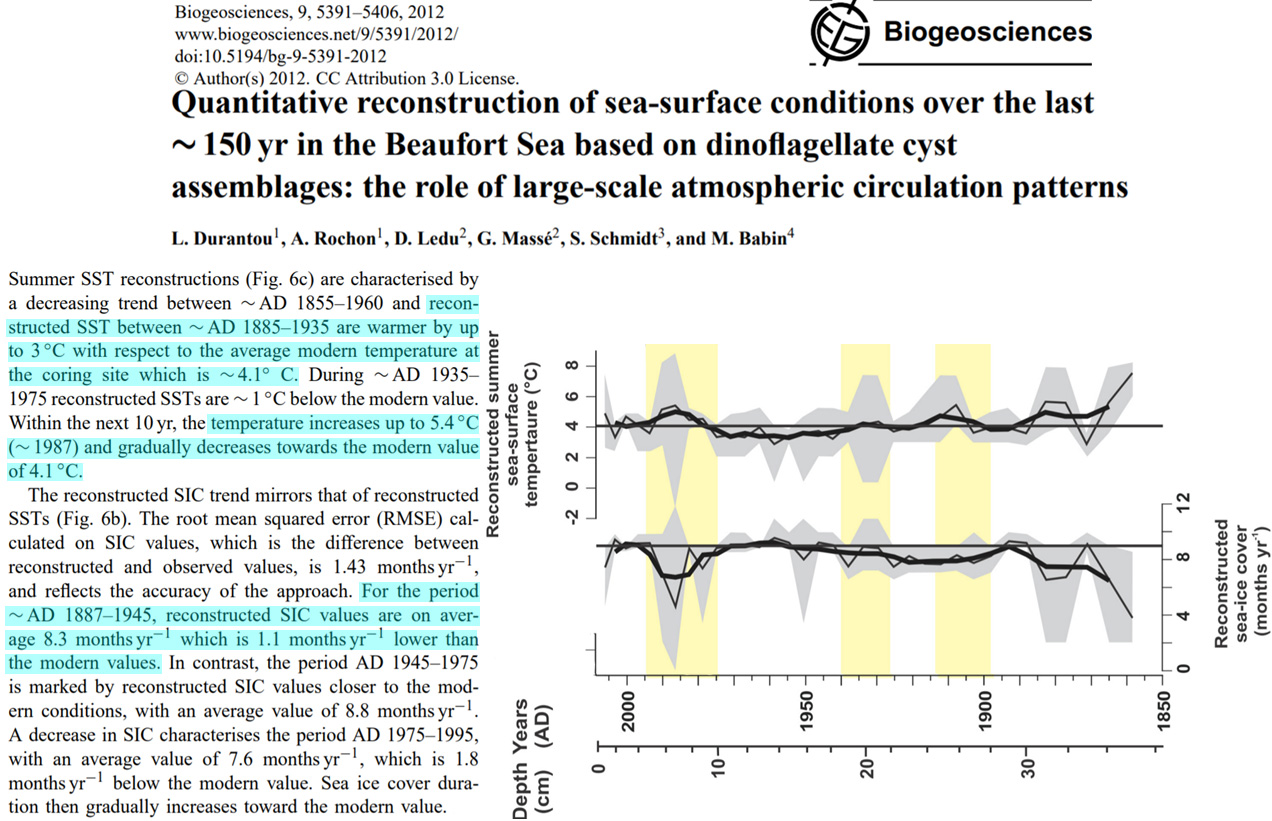
Image Source: Durantou et al., 2012
The modern West Greenland regional sea ice extent “during the last ~0.3 kyr (0.2 years BP to present)” has spring sea ice last through May, whereas “before 0.3 years BP (2.2-0.3 years BP)” there was “lower than present sea ice conditions” and no sea ice present during the months of April and May (Kolling et al., 2018).
